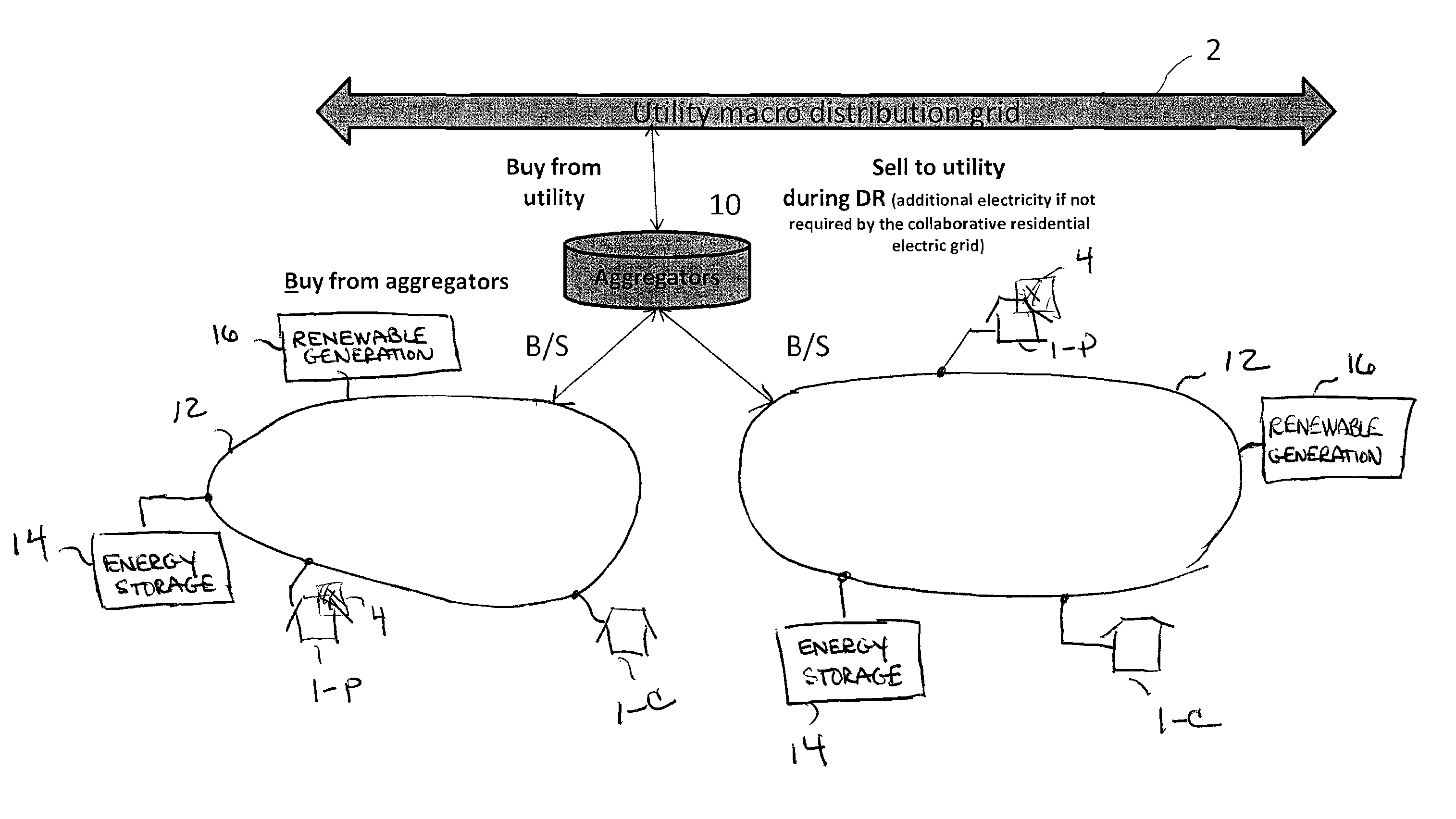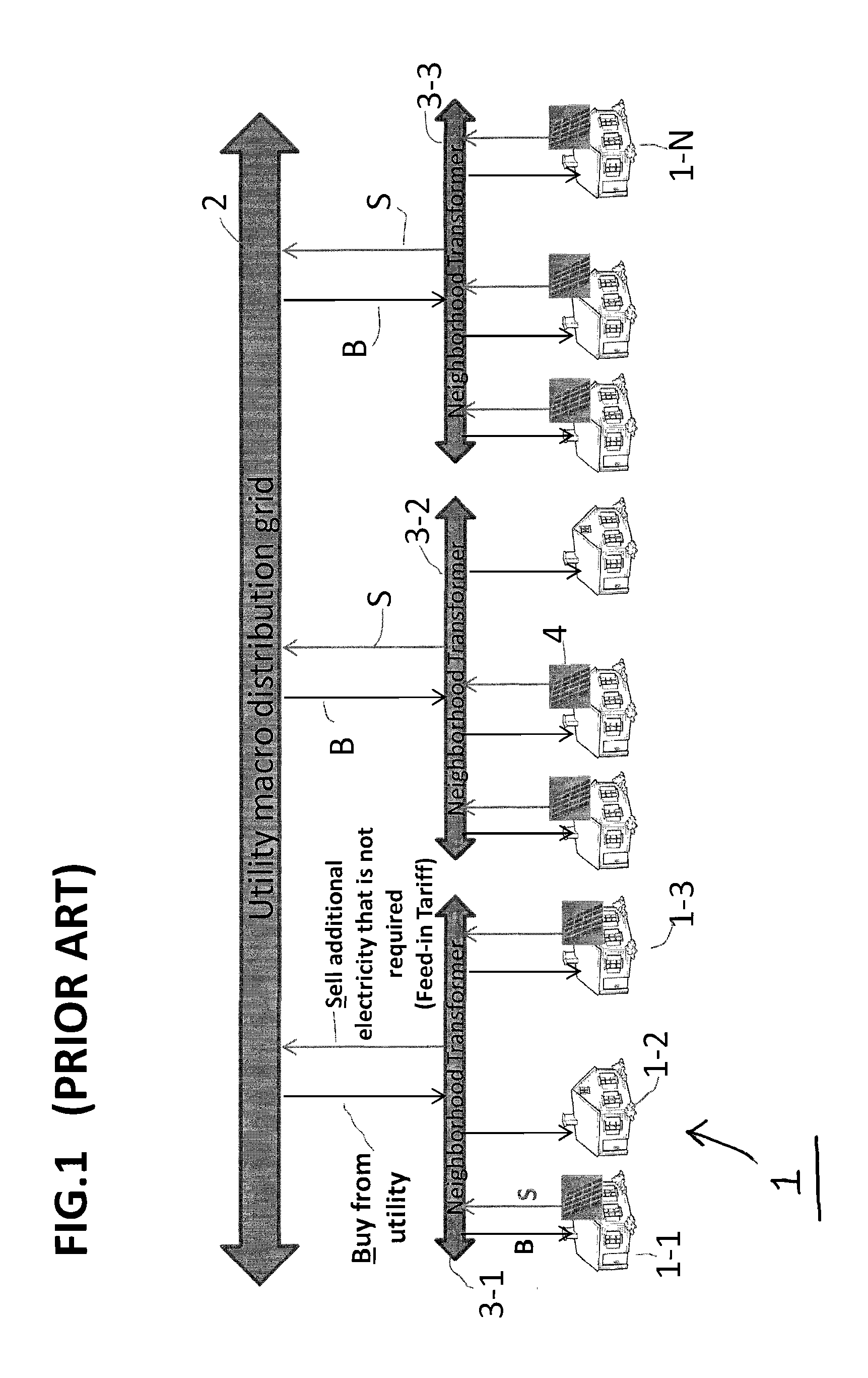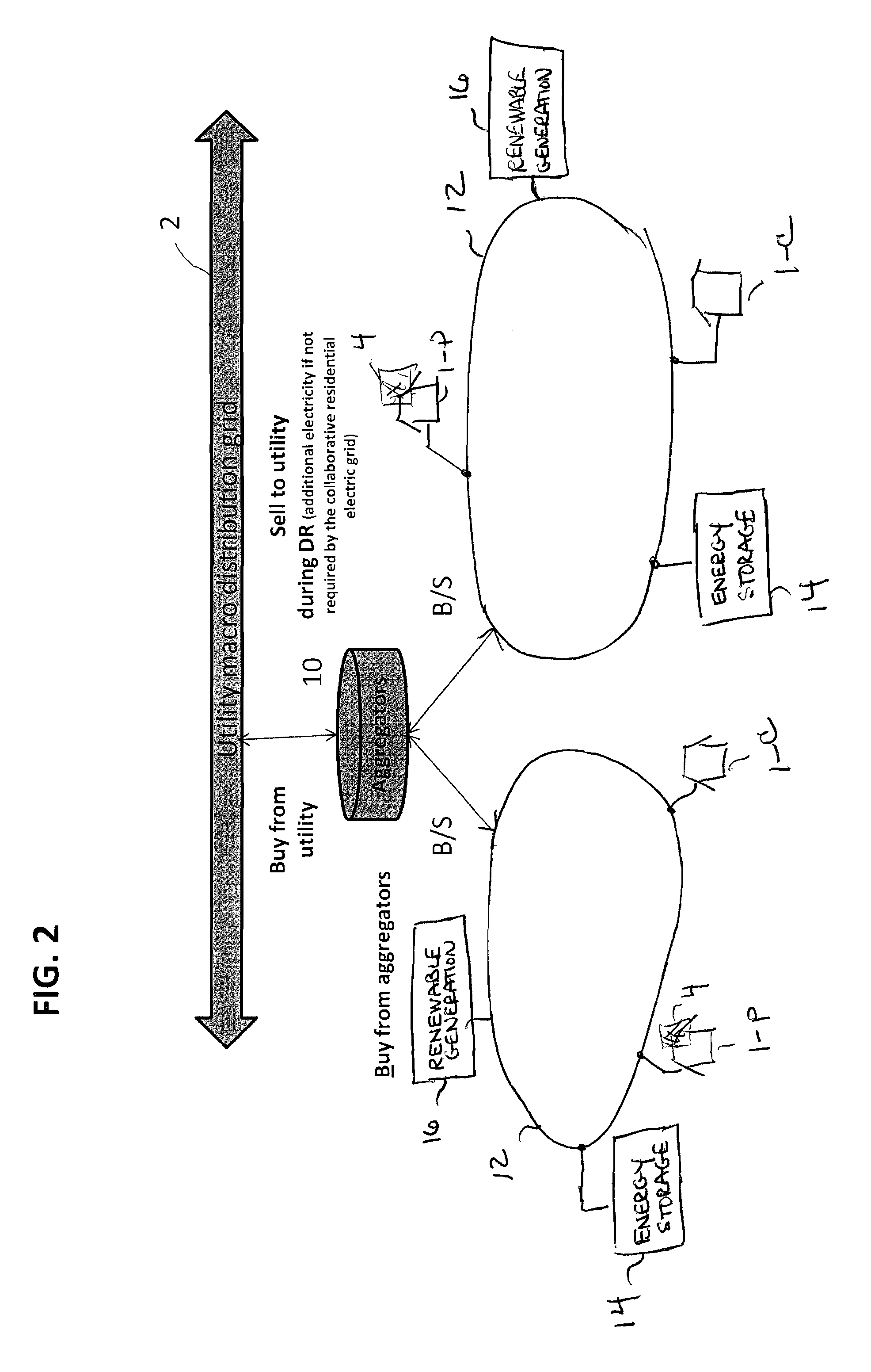Aggregator-based electric microgrid for residential applications incorporating renewable energy sources
a renewable energy source and aggregator technology, applied in the field of electric microgrids, can solve the problems of sharply increasing energy prices, increasing electricity prices to consumers, and increasing pressure on electrical generation and distribution systems in the united states, and achieve the effect of facilitating a better negotiating position
- Summary
- Abstract
- Description
- Claims
- Application Information
AI Technical Summary
Benefits of technology
Problems solved by technology
Method used
Image
Examples
Embodiment Construction
[0023]The present invention proposes a model of an electric microgrid for the residential distribution domain, utilizing an aggregator to provide localized energy storage and coordination among a group of residential “prosumers” connected to the microgrid for intelligent bi-directional electricity usage, where a “prosumer” is defined as an individual (residential individual) that both consumes and produces electricity. In accordance with the present invention, it is presumed that a significant number of the residences connected to the microgrid are capable of generating electricity from renewable resources (e.g., solar, wind, biomass); however, the benefits of the aggregator-based microgrid are applicable (to a lesser degree) to a traditional residential consumer as well as a residential prosumer. As will be discussed below, the economic benefits available to the residential prosumer in this aggregator-microgrid model serves to further encourage the installation of additional renewa...
PUM
 Login to View More
Login to View More Abstract
Description
Claims
Application Information
 Login to View More
Login to View More - R&D
- Intellectual Property
- Life Sciences
- Materials
- Tech Scout
- Unparalleled Data Quality
- Higher Quality Content
- 60% Fewer Hallucinations
Browse by: Latest US Patents, China's latest patents, Technical Efficacy Thesaurus, Application Domain, Technology Topic, Popular Technical Reports.
© 2025 PatSnap. All rights reserved.Legal|Privacy policy|Modern Slavery Act Transparency Statement|Sitemap|About US| Contact US: help@patsnap.com



